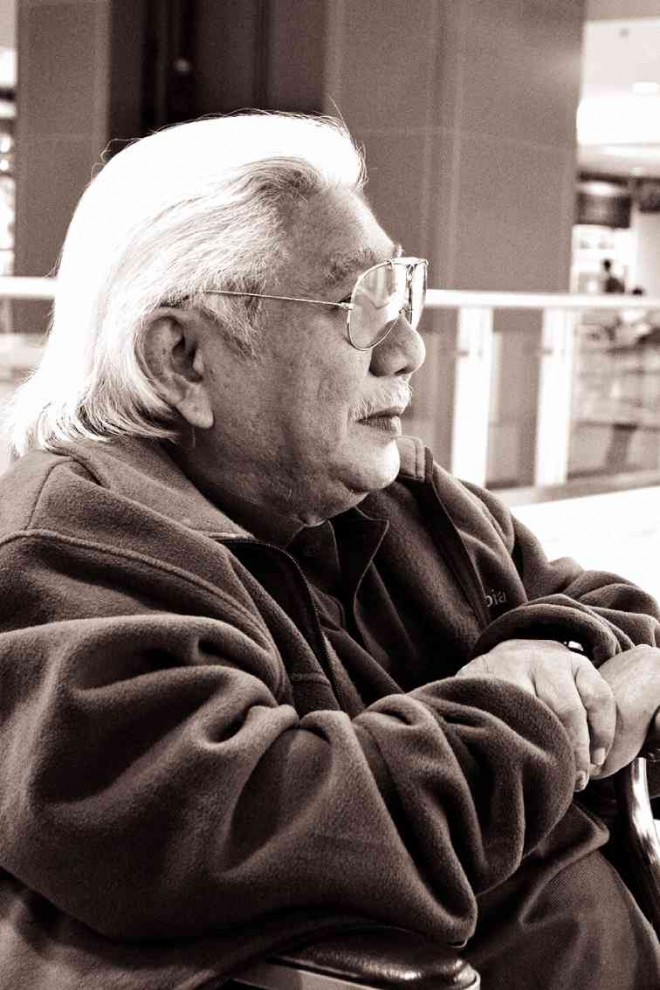Romulo Olazo, one of the most dominant abstractionists of the second generation of Filipino modern visual artists—and probably with the most longevity and staying power—has passed away Tuesday morning. He was 81.
Patricia Tria Olazo, the artist’s wife, confirmed to the Inquirer the death. “Yes, Lito, he has passed away this morning. We are still attending to the details.”
Miss Olazo didn’t reveal the circumstances of her husband’s death, but it has been known among art circles that the artist had been with a heart pacemaker for several years now.
But even with a pacemaker, Olazo embarked in the 2000’s on the monumental “Diaphanous” series of murals—large-scale abstract works that combined painting and print (specifically silkscreen) of irregular but still highly geometric forms overlapping one another, the overlaps shown in very soft and sensitive lines and colors that become a symphony of silhouettes and nuances, that seem to throb like musical resonance, and provide a feeling of therapy and calm to the viewer.
Not surprisingly, the series has been a big hit among collectors and art lovers and should now be nearly priceless.
Olazo was born on July 21, 1934 in Batangas, where he grew up and studided. He later moved to Manila where he became a working student starting in 1959 at the Universitu of Santo Tomas, the cradle of Modernism in the Philippines.
His teachers included National Artist Victorio Edades and Diosdado Lorenzo. His classamtes included Ong Bungian, Ting Ping Lay, Elizabeth Cheng, Anastacia Mamuya, James Onglepho, and National Artist Ang Kiukok.
He joined the advertising world after UST, but he continued to paint and do prints and participate in several shows especially with the Art Association of the Philippines.
In 1972, Olazo was included in the first batch of Thirteen Artists Awards of the Cultural Center of the Philippines, which drew its inspiration from the list of the “Thirteen Moderns” or pioneering Philippine modern artists that had been been draw many decades before by his teacher, Edades, and which originally included his other teachers at UST, such as Lorenzo, Vicente Manansala, and Galo Ocampo.
Also in the first batch in 1972 were Ofelia Gevelson Tecqui, Mario Parial, Danilo Dalena, Alfredo Liongoren, and Ibarra de la Rosa.
Olazo was the Philippine representative to the XII Biennial in Sao Paolo, Brazil in 1973, in which he exhibited his “Diaphanous” series in colography, and to the 11th Biennial of Prints in Tokyo, where he won an honorable mention for his Permutation series, abstract art in acetate pages whose concept and forms would later characterize his later Diaphanous series.
At home in both representational and non-representational art, Olazo’s imagination was buoyant and vital and energetic, belying his old age. Even when he went around with a pacemaker and in a wheelchair, he was still hard at work at his huge murals of beautiful forms and therapeutic gossamer colors.
Olazo married Patricia in 1966. They had three children, one of whom, Jonathan Olazo, is one of today’s more exciting contemporary artists and who curates the annual ManilArt, the oldest and biggest art fair in the Philippines.










































